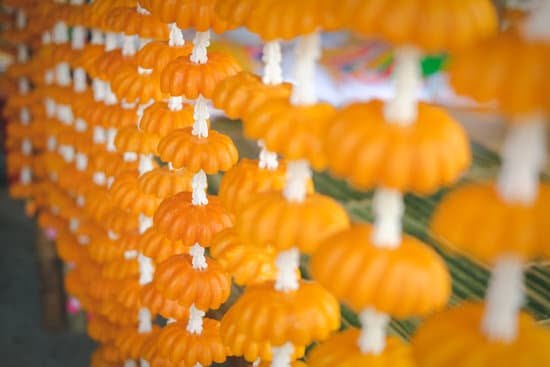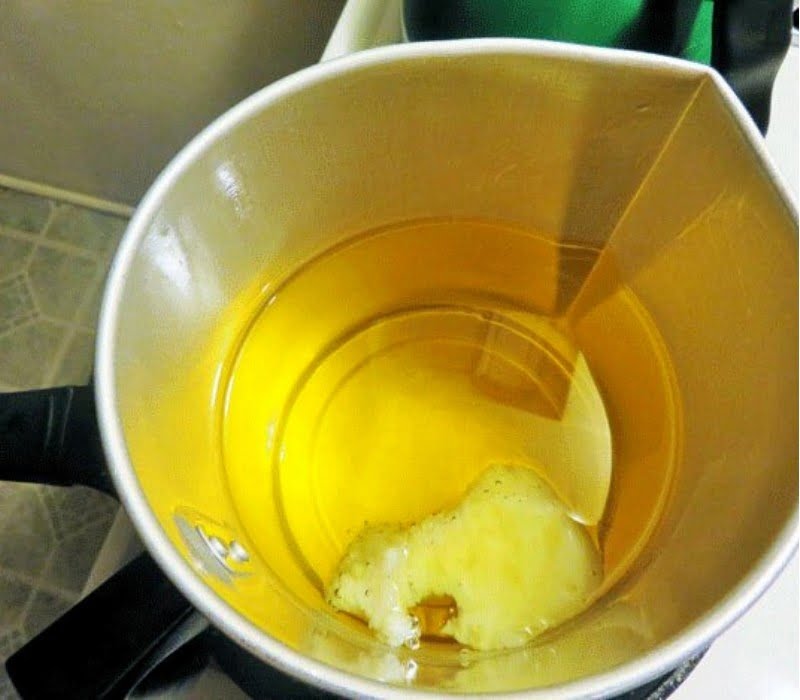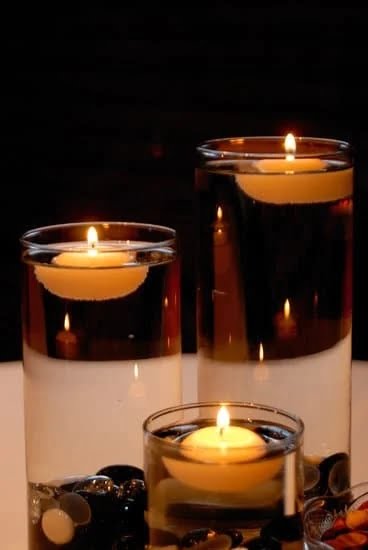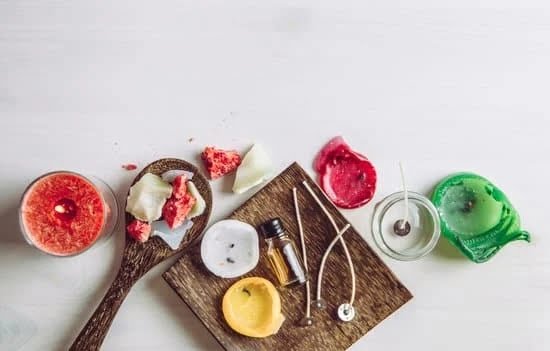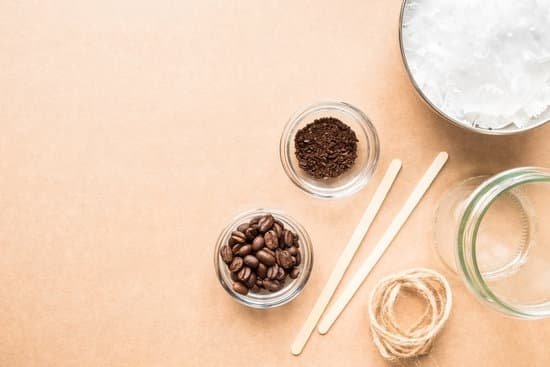Candle making has long been a cherished craft, bringing warmth and ambiance to any space. And while the flickering flame is undoubtedly soothing, it’s the aromas that can truly transport us to another world. Essential oils, with their potent scents and therapeutic properties, have become increasingly popular in candle making for their ability to enhance relaxation and create a personalized sensory experience.
In this article, we will delve into the art of mixing essential oils for candle making, exploring the various aspects of creating unique scent combinations that ignite the senses. Whether you are a seasoned candle maker or just starting out on your aromatic journey, understanding how to blend essential oils effectively can take your creations to new heights.
Before we dive into the intricacies of mixing essential oils for candles, let’s first gain a basic overview of essential oils themselves. From their origins and extraction methods to their diverse range of fragrances and benefits, we will explore what makes these natural compounds so captivating in the realm of candle making.
So, if you’re ready to elevate your candle creations and introduce an array of captivating scents into your space, read on as we guide you through the power of essential oils in candle making. Get ready to explore the artistry behind blending fragrances and unleash your creativity with every flicker of flame.
Understanding Essential Oils
Essential oils play a crucial role in candle making, as they contribute to the overall fragrance and therapeutic properties of the candles. It is important to have a basic understanding of essential oils before starting your candle-making journey.
What are Essential Oils?
Essential oils are highly concentrated plant extracts that capture the natural aroma and beneficial properties of the plants they are derived from. They are obtained through various methods such as steam distillation, cold-press extraction, or solvent extraction. Each essential oil has its own unique scent profile and therapeutic benefits, making them a popular choice for enhancing the atmosphere and promoting well-being in candle making.
The Diversity of Essential Oils
There is an extensive range of essential oils available, each with its own distinct characteristics and uses. Some common essential oils used in candle making include lavender, peppermint, eucalyptus, citrus fruits (such as lemon and orange), and floral scents like rose or jasmine. These oils can be categorized into different groups based on their fragrance families such as floral, citrus, woody, herbal, or spicy. Understanding these categories can help you create well-balanced scent combinations for your candles.
Beyond Fragrance: Therapeutic Benefits
In addition to their pleasing aromas, essential oils have been widely known for their therapeutic properties. For example, lavender essential oil is often used for relaxation and stress relief while eucalyptus oil is known for its invigorating effects on the respiratory system.
Consider the desired mood or effect you want to achieve when selecting essential oils for your candles. Whether it’s creating a calming ambiance or promoting focus and concentration, incorporating therapeutic benefits can elevate the overall sensory experience of your candles.
Having a grasp on the basics of essential oils will set you on the right path when it comes to selecting fragrances and creating unique scent combinations for your candles. Remember to choose high-quality essential oils from reputable sources to ensure the best results in your candle-making endeavors.
Selecting the Right Essential Oils for Candle Making
When it comes to candle making, selecting the right essential oils is crucial in creating the perfect aroma for your candles. With so many options available, it can be overwhelming to choose which oils to use. This comprehensive guide will walk you through the process of selecting essential oils that not only smell amazing but also complement each other.
Understanding Scent Categories
Before diving into selecting specific essential oils, it’s helpful to understand scent categories. Essential oils can be categorized into different groups based on their fragrance profiles. The main scent categories include floral, woody, citrus, herbal, spicy, and sweet.
Floral scents are romantic and delicate, such as lavender or rose. Woody scents are earthy and grounding, like cedarwood or sandalwood. Citrus scents are fresh and uplifting, such as lemon or orange. Herbal scents are green and clean-smelling, like eucalyptus or peppermint. Spicy scents add warmth and depth to candles with notes of cinnamon or clove. Lastly, sweet scents are sugary and comforting, such as vanilla or coconut.
Creating Scent Profiles
Once you have a grasp on scent categories, you can start creating scent profiles by selecting complementary essential oils from different groups. A common strategy is to combine scents from two or three different categories to create a well-balanced blend.
For example, if you want to create a calming candle fragrance, you might combine lavender (floral), chamomile (herbal), and cedarwood (woody). If you prefer a refreshing scent for your candles, you could blend grapefruit (citrus), mint (herbal), and lemongrass (woody).
Experimenting with different combinations is key in finding your own unique scent profiles that suit your preferences and purpose. Keep in mind that certain oils may have a stronger fragrance, so it’s important to experiment with different ratios to achieve the desired aroma.
Consider Candle Type and Intended Use
When selecting essential oils for candle making, it’s also important to consider the type of candle you’re creating and the intended use. For example, if you’re making soy candles that are meant for relaxation or meditation, you might opt for calming scents like lavender or frankincense.
Similarly, if you’re making candles for special occasions like weddings or birthdays, consider fragrances that align with the theme. Floral scents like rose or jasmine are popular choices for romantic events, while sweet scents like vanilla or chocolate might be fitting for birthday celebrations.
By considering the candle type and its intended use, you can select essential oils that not only smell great but also enhance the overall mood and atmosphere.
Safety Precautions When Handling Essential Oils for Candle Making
Understanding the Potential Hazards
Before diving into the world of essential oils for candle making, it is crucial to understand the potential hazards associated with their use. While essential oils are natural and derived from plants, they are highly concentrated substances that need to be handled with care.
Some essential oils can cause skin irritation, sensitization, or even allergic reactions if not used properly. It is important to research and familiarize yourself with any potential risks associated with specific essential oils before using them in your candle-making process.
Protective Measures to Take
To ensure your safety when handling essential oils for candle making, there are a few protective measures you should always take. First and foremost, it is recommended to wear gloves when working with undiluted essential oils. This will help protect your skin from direct contact and minimize the risk of irritation or sensitization.
In addition to gloves, it is also advisable to wear safety goggles or glasses when mixing essential oils. This will safeguard your eyes in case of accidental splashes or spills during the blending process.
Lastly, proper ventilation is crucial when working with essential oils. Many of these oils have potent aromas that can be overwhelming and even harmful if inhaled in high concentrations. Open windows or work in a well-ventilated area to ensure a constant flow of fresh air while blending your essential oil recipes.
Storage and Handling Tips
To maintain the potency and longevity of your blended essential oils, it is vital to store them properly. Essential oils should be kept in dark glass bottles away from direct sunlight and heat sources as exposure to light and temperature fluctuations can alter their chemical composition.
When not in use, make sure to tightly seal the bottles containing your blends to prevent evaporation or leakage. Label each bottle clearly with the name of the blend, date of creation, and any additional notes regarding concentration or dilution ratios.
Furthermore, always keep essential oils out of reach from children and pets. While they can provide numerous benefits when used correctly, essential oils should be treated with caution and responsibility.
By following these safety precautions, you can ensure a safe and enjoyable experience while working with essential oils for candle making. Remember that the well-being of yourself and others should always come first when handling these potent substances.
The Art of Blending Essential Oils
The art of blending essential oils is essential for creating unique and balanced scents in candle making. As a beginner, it’s important to understand some tips and tricks that can help you achieve the desired aroma for your candles. Here are some useful guidelines to follow:
- Start with a plan: Before you begin blending essential oils, it’s helpful to have a plan in mind. Think about the mood or atmosphere you want to create with your candle scent. Consider whether you want a refreshing, calming, or uplifting aroma. This will guide your selection of essential oils and help you create a harmonious blend.
- Understand scent notes: Essential oils are categorized into top, middle, and base notes based on their evaporation rate and intensity. Top notes are the initial scents that hit your nose when you smell a candle, while middle notes provide body and balance to the fragrance, and base notes offer depth and longevity. When blending essential oils, it’s important to include all three types of notes to create a well-rounded scent profile.
- Use proper ratios: When blending essential oils for candles, it’s crucial to use the right ratios to achieve a balanced blend. Typically, a good starting point is 30% top notes, 50% middle notes, and 20% base notes. However, these percentages can vary depending on personal preference and the specific scents you’re using. Experiment with different ratios until you find the perfect balance.
| Top Note | Middle Note | Base Note |
|---|---|---|
| Lemon | Rosemary | Vetiver |
| Bergamot | Lavender | Sandalwood |
| Orange | Cinnamon | Vanilla |
Remember, blending essential oils is a highly creative process, and these tips should serve as a starting point. Don’t be afraid to experiment and try out different combinations until you find your signature scent. With practice and experience, you’ll become more confident in your ability to create beautifully scented candles that bring joy and relaxation to those who use them.
Step-by-Step Guide
One of the most exciting aspects of candle making is the opportunity to create unique and personalized scents using essential oils. Mixing essential oils requires a careful balance and understanding of how different scents work together to create harmonious aromas. In this step-by-step guide, we will walk you through the process of blending essential oils for candle making.
Step 1: Choosing Your Essential Oils
Start by selecting the essential oils that you want to use in your candle. Consider the mood or atmosphere you want to create, such as relaxation, energy, or romance. Take note of the top, middle, and base notes of each oil. This information will help you create a well-rounded scent profile for your candle.
Step 2: Determine the Blend Ratio
Next, decide on the ratio of each essential oil in your blend. It’s generally recommended to use a total of 10-15% essential oil to wax ratio. For example, if you’re using 500g (17.6oz) of wax, aim for about 50-75g (1.7-2.6oz) of combined essential oil.
To determine the specific ratio for each oil in your blend, start with a small percentage (around 10%) for stronger scents and increase it gradually as needed. Keep track of your ratios so you can replicate successful blends in the future.
Step 3: Mixing Your Essential Oils
Now it’s time to mix your selected oils together. Start by adding a few drops of each oil into a clean glass container or beaker. Begin with just a few drops and adjust as necessary.
Once all oils are added, gently stir them together using a glass stirring rod or stainless steel spoon until well blended. Take note of any overpowering aromas or imbalances in your blend as these can be adjusted in the next step.
Remember that scent is subjective, so trust your nose and make adjustments based on personal preference. Don’t be afraid to experiment and try different combinations until you find the perfect blend for your candle.
By following this step-by-step guide, you’ll be able to confidently mix essential oils for your candle making projects. Remember to take notes on each blend so you can recreate your favorite scents in the future. With practice and experimentation, you’ll discover a world of possibilities in scent combinations for your handmade candles.
Creating Various Scent Combinations
Creating unique and captivating scent combinations is one of the most exciting aspects of candle making with essential oils. By layering different aromas, you can create custom blends that evoke specific moods or bring back cherished memories. In this section, we will explore some tips and secrets to help you master the art of layering aromas in your essential oil candles.
When it comes to creating scent combinations, it is important to have a basic understanding of fragrance families. Fragrances can be categorized into various families such as floral, citrus, woody, herbal, and spicy. Each fragrance family has its own characteristics and scents that complement each other well. Experimenting with different combinations from within the same fragrance family can result in harmonious blends.
Another technique for layering aromas is using top notes, middle notes, and base notes. Top notes are the scents that are immediately noticed when the candle is lit. They tend to be bright and uplifting fragrances such as citrus or herbal scents.
Middle notes provide depth and complexity to the blend and usually consist of floral or fruity scents. Base notes are rich and long-lasting fragrances like musk or vanilla that anchor the blend and linger after the candle has been extinguished.
| Fragrance Family | Top Note | Middle Note | Base Note |
|---|---|---|---|
| Floral | Bergamot | Rose | Sandalwood |
| Citrus | Lemon | Ylang Ylang | Vanilla |
| Woody | Cypress | Patchouli | Vetiver |
Remember, the best way to create unique scent combinations is through experimentation. Don’t be afraid to mix and match different fragrances to discover your own signature blends. With time and practice, you will become more confident in layering aromas and creating candles that truly reflect your personal style and preferences.
In the next section, we will discuss how to test and adjust your essential oil candle recipes to ensure you achieve the desired scent intensity and balance.
Testing and Adjusting
Once you have mixed your essential oils for candle making, it is important to test and adjust the scent to achieve the desired fragrance strength. This step is crucial in perfecting your essential oil candle recipes. Here are some tips on how to effectively test and adjust your blends:
Testing Different Candle Sizes
Different candle sizes require different amounts of essential oils to achieve a balanced fragrance. Start by burning a small sample candle of each size you plan to make. Burn them individually and note the strength of the scent throw. Adjust the amount of essential oil used based on your preferences.
Using Scent Testers
Scent testers, also known as aroma testers or scent strips, are a useful tool for evaluating the strength and quality of the scent in your candles. Dip or spray the tester with your blended essential oil mixture and let it dry completely. Wave it under your nose, taking note of the intensity and overall aroma. Make adjustments accordingly.
Sniff Tests
To get an idea of how well your candles will smell when burned, perform sniff tests after pouring the blended essential oils into the melted wax. Allow the candles to cool and cure for at least 24 hours before lighting them up. Light each candle individually and assess how strong or weak the scent is while they burn.
Adjusting Essential Oil Ratios
If you find that your candles have an overpowering aroma or if the fragrance is too weak, you can easily adjust the ratios of your essential oils in future batches. Increasing or decreasing certain oils can help achieve better balance and desired intensity in scent throw.
Remember that a little adjustment can go a long way when it comes to perfecting your essential oil candle recipes. It may take some trial and error before achieving that ideal fragrance combination which is why testing and adjusting are crucial steps in the candle making process. Don’t be afraid to experiment and discover new blends that inspire you and delight your senses.
Storing and Preserving Blended Essential Oils for Longevity
After spending time and effort blending essential oils for your candle making projects, it is important to store and preserve them properly to ensure their longevity. The quality of your essential oil blends can deteriorate over time if not stored correctly. Follow these tips to keep your blended essential oils fresh and potent:
- Use Amber Glass Bottles: When storing essential oil blends, it is crucial to use dark-tinted glass bottles, preferably amber or cobalt blue. These colored bottles help protect the oils from exposure to light, which can cause oxidation and degradation.
- Keep Away from Heat and Sunlight: Essential oils are sensitive to heat and sunlight, which can break down their chemical properties. Store your blended oils in a cool, dark place away from direct sunlight or sources of heat, such as radiators or stoves.
- Tighten Caps Securely: Make sure the caps on your essential oil bottles are tightly sealed to prevent air from entering and oxidizing the oils. Oxygen exposure can reduce the potency and aroma of your blends.
- Label and Date Your Bottles: To keep track of your different blends and ensure you use them within their recommended shelf life, label each bottle with its contents and creation date. This way, you will know when it’s time to refresh or discard the blend.
- Avoid Contamination: To maintain the integrity of your blended essential oils, avoid introducing any contaminants into the bottles. Cleanse your hands before handling the bottles or use a dropper instead of pouring directly from the bottle.
Proper storage is vital for preserving the scent profiles and therapeutic properties of your blended essential oils. By following these guidelines, you can extend the shelf life of your creations while ensuring that they remain effective for future candle making endeavors.
| Tips for Storing Blended Essential Oils |
|---|
| Use dark-tinted glass bottles, preferably amber or cobalt blue |
| Store in a cool, dark place away from sunlight and heat sources |
| Tighten caps securely to prevent air oxidation |
| Label bottles with contents and creation date for easy tracking |
| Avoid introducing contaminants into the bottles |
Troubleshooting Common Issues
Overpowering aromas and weak scents can be common issues when it comes to candle making with essential oils. While it’s exciting to experiment with different scent combinations, sometimes the result may not turn out as expected. Luckily, there are troubleshooting techniques that can help you balance the aromas and enhance the scent throw of your candles.
1. Dilution: If you find that the aroma of your candles is overpowering, you may need to dilute the essential oils. You can do this by adding additional carrier oil or a neutral-scented wax to the mixture. Start with a small amount and gradually increase until you achieve the desired scent strength.
2. Adjusting Ratios: Another way to troubleshoot overpowering aromas is by adjusting the ratios of essential oils in your recipe. Experiment with reducing the amount of stronger essential oils and increasing milder ones until you find the right balance.
3. Scent Layering: Weak scents can be disappointing, but they can also be improved through scent layering. This technique involves using different essential oils at different stages of candle making, allowing each fragrance to build upon one another for a more complex and noticeable scent throw.
4. Temperature Control: Proper temperature control during candle making is crucial for achieving balanced aromas. If your candles have weak scents, it could be due to pouring the melted wax too hot, which can cause essential oils to evaporate too quickly. To troubleshoot this issue, try pouring at a slightly lower temperature or consider adding more fragrance after pouring.
By applying these troubleshooting techniques, you’ll have more control over the strength and quality of your candle’s aromas. Remember that finding the perfect balance may require some experimentation and adjustments to your recipes. With practice and patience, you’ll become skilled at troubleshooting and creating beautifully scented candles every time.
Conclusion
In conclusion, essential oil candle making is a wonderful way to tap into your creativity and create personalized scents that can enhance your home and mood. By understanding the power of essential oils and selecting the right ones for your candles, you can create captivating aromas that have various benefits for relaxation, energy, or even focus. It is important to always prioritize safety when working with essential oils and take necessary precautions to protect yourself.
The art of blending essential oils is where your creativity truly shines. Experimenting with different combinations and layering aromas allows you to create unique scents that are tailored to your preferences. Remember to start with small amounts and test each blend before committing to a larger batch. This will help you fine-tune your recipes and make any necessary adjustments.
As you continue on your essential oil candle making journey, it’s crucial to regularly test and adjust your recipes for optimal scent intensity. Sometimes fragrances can be overpowering or too weak, but with patience and perseverance, you can perfect your blends. Storing and preserving blended essential oils properly will also ensure their longevity, allowing you to enjoy them for months or even years.
So go ahead and unleash your creativity with essential oil candle making. With the knowledge gained from this comprehensive guide, you have the tools to create beautiful candles that not only provide a delightful fragrance but also offer therapeutic benefits. Whether it’s relaxation, invigoration, or setting a specific ambiance in mind, essential oil candles are a fantastic addition to any space. So gather your supplies, mix up some enchanting scents, and enjoy the soothing glow of these handmade creations.
Frequently Asked Questions
What is the ratio of essential oils to candle wax?
The ratio of essential oils to candle wax can vary depending on personal preference and the specific scent desired. However, a common rule of thumb is to use approximately 1 ounce of essential oil for every pound (or 16 ounces) of candle wax.
This ratio ensures a strong and noticeable fragrance when the candle is burned. It is important to note that different essential oils may have different strengths, so it’s always a good idea to start with a smaller amount and gradually increase if needed.
How many drops of essential oil for 4 oz candle?
When making a 4 oz candle, the number of drops of essential oil can also depend on personal preference and the desired strength of the scent. As a general guideline, it is recommended to add around 20-25 drops of essential oil per 4 ounces of candle wax.
However, this can be adjusted based on the specific oil being used and how potent its fragrance is. It’s always helpful to experiment with smaller batches first to find the perfect balance between scent throw and not overpowering the room.
What is the ratio of essential oils to soy candles?
The ratio of essential oils to soy candles is similar to that used for other types of candles. A commonly suggested ratio is around 1 ounce of essential oil per pound (or 16 ounces) of soy wax.
Soy candles tend to have better scent throw compared to some other waxes, so using less oil might still result in a noticeable fragrance when they are burned. Again, it’s important to consider personal preferences and the strength of each particular essential oil being used when determining the ideal ratio for soy candles.

Welcome to my candle making blog! In this blog, I will be sharing my tips and tricks for making candles. I will also be sharing some of my favorite recipes.

